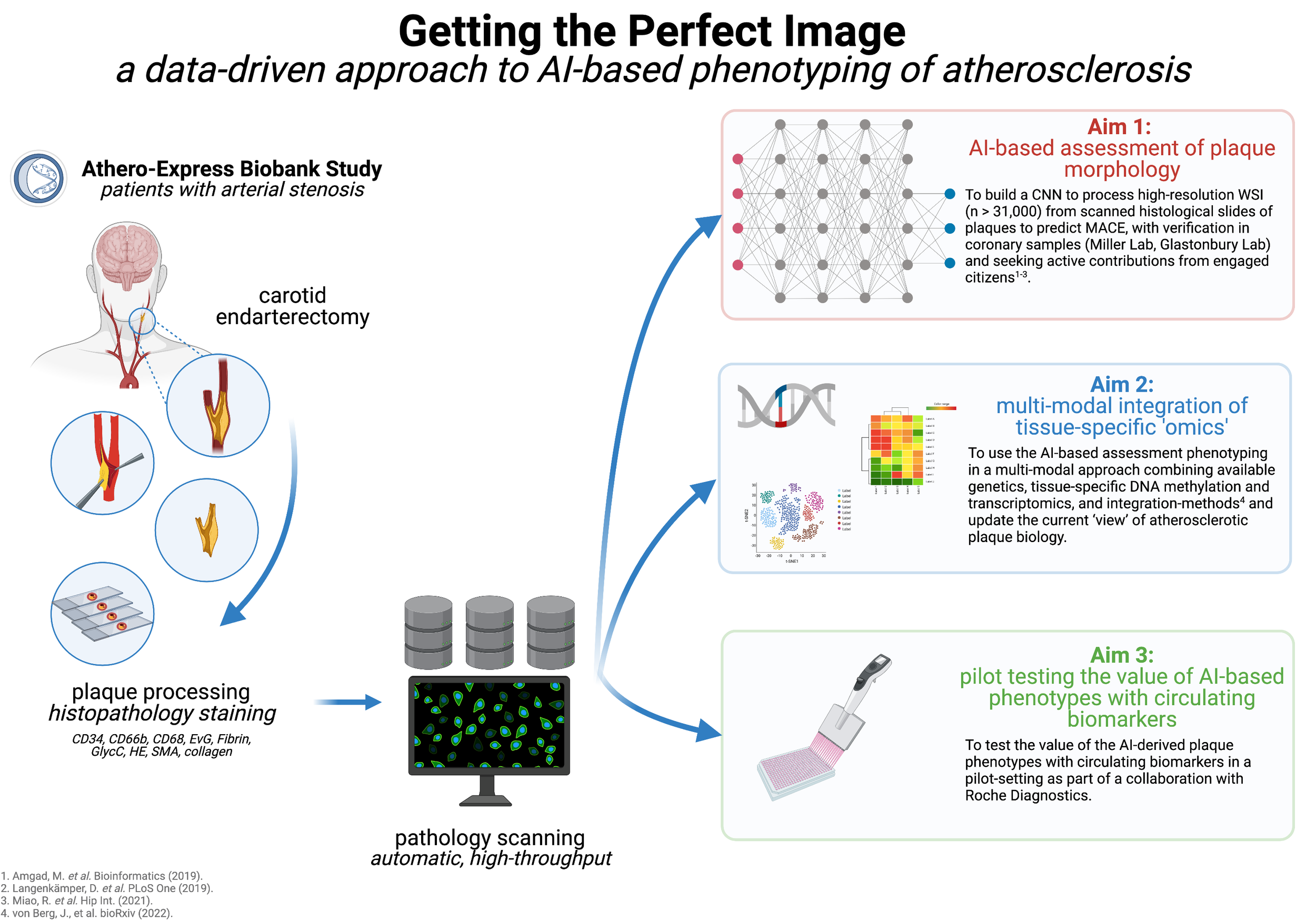Getting the Perfect Image
We are happy to announce that we were awarded €800,000 for our proposal Getting the Perfect Image for this year’s Health Holland TKI application round.
Getting the Perfect Image
Through a data-driven approach we will develop a new AI-based phenotyping of atherosclerotic plaques. This enables better assessment of plaques morphology for research purposes. It will enable us to further correlate these AI-based phenotypes with different plaque-derived ‘omics’-layers to identify circulating biomarkers of plaque morphology. And lastly, we will pilot test putative biomarkers.
Cardiovascular diseases are topping global charts of morbidity and mortality. Atherosclerosis is the major cause of CVD and results in arterial plaques. Surgical plaque-removal is the current standard to reduce risk of future cardiovascular events (MACE). Pathological plaque phenotyping is widely used in experimental research and is the preeminent surrogate measure of disease-risk independent from other "omics"-methods.
The extent and type of atherosclerosis is manually assessed through analysis of whole-slide plaque images (WSI) which remains the most accessible and cost-effective method of plaque characterisation in research. This conventional microscopic phenotyping is executed by eyeballing, labour intensive, prone to interindividual variability and errant human interpretation, ‘noisy’, and imprecise. The totality of the plaque composition is scarcely considered, rather single characteristics are averaged, or dichotomized. This puts major limitations on translation towards circulating biomarkers: ideally one seeks biomarkers that directly link histological plaque characteristics as accurateproxies of MACE (since in a clinical setting plaque phenotyping is not feasible).
Getting the Perfect Image applies methods from artificial intelligence (AI) on thousands of WSI to consider and quantify the whole plaque in pursuit of 3 objectives: 1) AI-based plaque phenotyping and prediction of MACE, 2) multi-modal integration with tissue-specific "omics"-data, 3) pilot testing the value of AI-derived plaque phenotypes with circulating biomarkers.
Getting the Perfect Image represents a paradigm shift from the current standard of manual phenotyping to an AI-based plaque phenotyping. This is of major interest to the scientific and biotech community and critically important to accelerate the mechanistic insights and the translation towards biomarkers that reflect a specific state of disease. Getting the Perfect Image helps to identify patients that need treatment and those that do not, thereby reducing the burden on individual patients and society.
We are excited to further solidify our collaborations with Clint Miller at the University of Virginia (USA) and Craig Glastonbury at Human Technopole (Milan, Italy). Getting the Perfect Image is complementary to PlaqAI, our recently awarded proposal in collaboration with Mitko Veta and Alejandro Lopez Rincon that takes integration a notch further. Looking forward to the next three years working with this awesome team!

